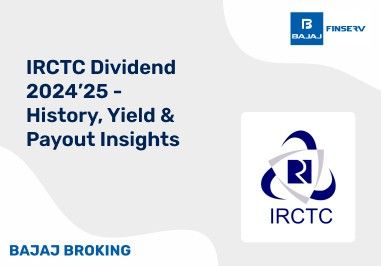BAJAJ BROKING
Tankup Engineers IPO is Open!
Open a Free Demat Account
Trade Now, Pay Later with up to 4x
Track Market Movers Instantly
What Is a Calendar Spread?
Advantages of Basket Order
What Is Calendar Spread?
A calendar spread, also known as a time spread or horizontal spread, is a popular options trading strategy used by investors and traders to profit from differences in the expected future price movements of an underlying asset. It involves purchasing and selling options at the same time. These options have the same strike price but different expiration dates. This strategy can be implemented using both call options and put options. In a calendar spread, the trader typically buys a longer-term option while simultaneously selling a shorter-term option with the same strike price.
The key idea behind a calendar spread is to take advantage of the time decay or “theta” component of option prices. Options with shorter expiration dates experience faster time decay than those with longer expiration. By benefiting from the differential decay rates, traders can generate income or potentially profit if the underlying asset’s price moves in a manner that favours the spread’s structure. Calendar spreads are often considered a neutral strategy and are commonly used when traders expect limited price fluctuations in the underlying asset.
Who Should Opt For A Calendar Spread Strategy?
A calendar spread strategy is suitable for a particular set of traders and investors who have specific market expectations and risk tolerance. Here are some individuals who might consider implementing a calendar spread:
- Income Traders: Calendar spreads can generate income through the time decay of options. Traders who are looking for consistent, relatively low-risk income in a stable or slightly trending market may find calendar spreads appealing.
- Neutral Market Traders: Traders who anticipate that the underlying asset will remain relatively stable or experience limited price fluctuations can use calendar spreads to profit from time decay while minimizing their exposure to significant directional risk.
- Volatility Expectation Traders: If A trader expects that predicted volatility will rise in the short term but fall in the long run over the longer term, then such a spread can capture the expected rise in volatility in the short-term options while maintaining exposure to the underlying asset in the longer term.
- Risk-Averse Investors: Calendar spreads have defined risk, and potential losses are limited to the initial investment. This makes them suitable for investors who want to control and limit their risk exposure.
- Options Income Investors: Investors who have a portfolio of stocks or other assets and want to enhance their income through options can use calendar spreads as part of their income-generating strategy.
- Options Traders with Limited Capital: Calendar spreads can be less capital-intensive compared to other options strategies, making them attractive to traders with limited trading capital.
It’s essential to understand that calendar spreads have a specific risk-reward profile and are most effective in certain market conditions. Traders should carefully assess their market outlook, risk tolerance, and the unique characteristics of calendar spreads before incorporating them into their trading strategies. Like any options strategy, a thorough understanding of options and their Greeks (e.g., theta, delta) is crucial for effective
Additional Read : Diagonal Spread vs. Calendar Spread
Advantages And Disadvantages Of A Calendar Strategy?
A calendar spread options strategy offers several advantages and disadvantages that traders should consider when deciding whether to implement this strategy:
Advantages:
- Income Generation: Calendar spreads can generate income through the time decay (theta) of options, making them appealing for income-oriented traders.
- Limited Risk: The risk in a calendar spread is well-defined and limited to the initial investment. This makes it a suitable strategy for risk-averse traders.
- Reduced Volatility Exposure: Calendar spreads can help mitigate the impact of changes in implied volatility because they involve both long and short options, which can offset one another to some extent.
- Versatility: This strategy can be used in different market conditions, including stable, slightly bullish, or slightly bearish markets, making it a versatile choice for various scenarios.
- Lower Capital Requirement: Calendar spreads often require less capital compared to other options strategies, which can be beneficial for traders with limited capital.
Disadvantages:
- Limited Profit Potential: The maximum profit in a calendar spread is capped, and it’s generally smaller than the potential loss, especially in highly volatile markets.
- Time Sensitivity: Calendar spreads are sensitive to changes in time, and the strategy relies on the options losing value due to time decay. If the underlying asset doesn’t move as expected, it can erode potential profits.
- Directional Risk: Although calendar spreads are considered neutral strategies, they still have some directional risk. If the underlying asset makes significant price moves, it can lead to losses.
- Complexity: Implementing a calendar spread effectively requires a good understanding of options and the factors that influence their pricing. It may not be suitable for novice traders.
- Transaction Costs: Multiple options contracts are involved in a calendar spread, which can result in higher transaction costs, particularly if the trader is using a brokerage with high commission fees.
- Margin Requirements: Some brokers may have margin requirements for calendar spreads that tie up a portion of the trader’s capital, potentially limiting their ability to use that capital for other investments.
Overall, a calendar spread can be a valuable strategy when used appropriately, but Investors ought to thoughtfully evaluate their market view as well as their risk tolerance, and investment goals when deciding whether to employ it. It’s important to weigh the potential benefits against the limitations and understand that it may not be the best strategy for all market conditions.
Conclusion
In conclusion, calendar spreads offer a versatile and potentially rewarding options trading strategy for a specific set of traders and investors. They are particularly suitable for income generation in neutral or moderately trending markets, and they provide limited risk exposure with well-defined profit and loss parameters. While calendar spreads can effectively capture the time decay of options and mitigate some aspects of volatility risk, they also come with limitations, such as limited profit potential, sensitivity to time decay, and potential directional risk. Investors ought to thoughtfully evaluate their market view as well as their risk tolerance, and capital constraints to determine if a calendar spread aligns with their objectives, and they should gain a solid understanding of options to use this strategy effectively.
Disclaimer: Investments in the securities market are subject to market risk, read all related documents carefully before investing.
Share this article:
Read More Blogs
Disclaimer :
The information on this website is provided on "AS IS" basis. Bajaj Broking (BFSL) does not warrant the accuracy of the information given herein, either expressly or impliedly, for any particular purpose and expressly disclaims any warranties of merchantability or suitability for any particular purpose. While BFSL strives to ensure accuracy, it does not guarantee the completeness, reliability, or timeliness of the information. Users are advised to independently verify details and stay updated with any changes.
The information provided on this website is for general informational purposes only and is subject to change without prior notice. BFSL shall not be responsible for any consequences arising from reliance on the information provided herein and shall not be held responsible for all or any actions that may subsequently result in any loss, damage and or liability. Interest rates, fees, and charges etc., are revised from time to time, for the latest details please refer to our Pricing page.
Neither the information, nor any opinion contained in this website constitutes a solicitation or offer by BFSL or its affiliates to buy or sell any securities, futures, options or other financial instruments or provide any investment advice or service.
BFSL is acting as distributor for non-broking products/ services such as IPO, Mutual Fund, Insurance, PMS, and NPS. These are not Exchange Traded Products. For more details on risk factors, terms and conditions please read the sales brochure carefully before investing.
Investments in the securities market are subject to market risk, read all related documents carefully before investing. This content is for educational purposes only. Securities quoted are exemplary and not recommendatory.
For more disclaimer, check here : https://www.bajajbroking.in/disclaimer
Our Secure Trading Platforms
Level up your stock market experience: Download the Bajaj Broking App for effortless investing and trading




















